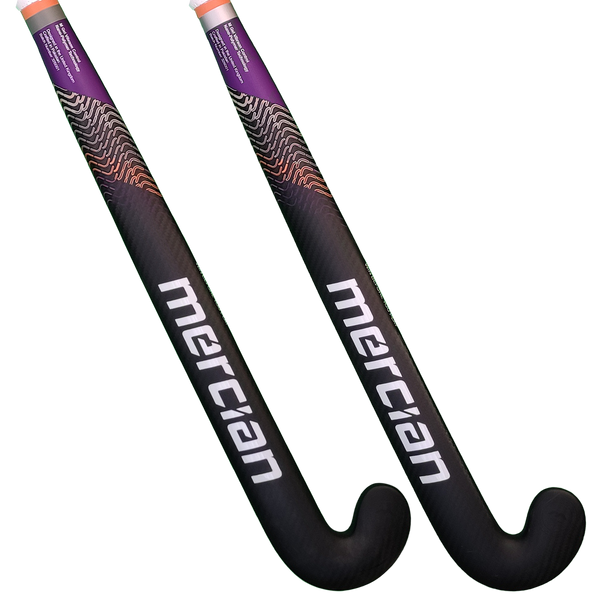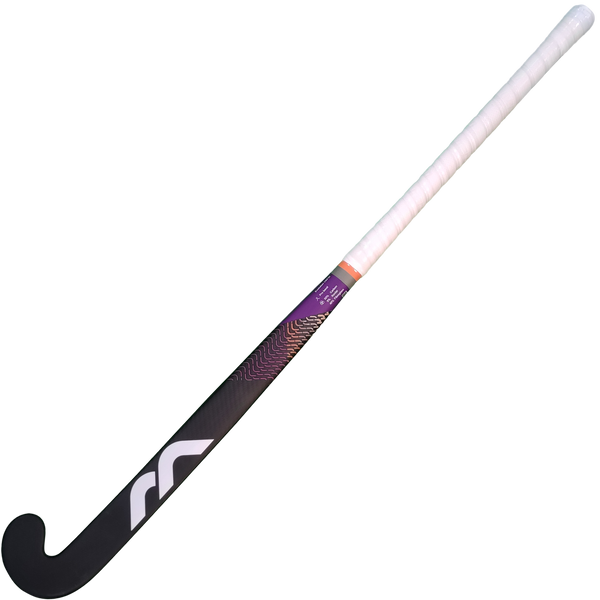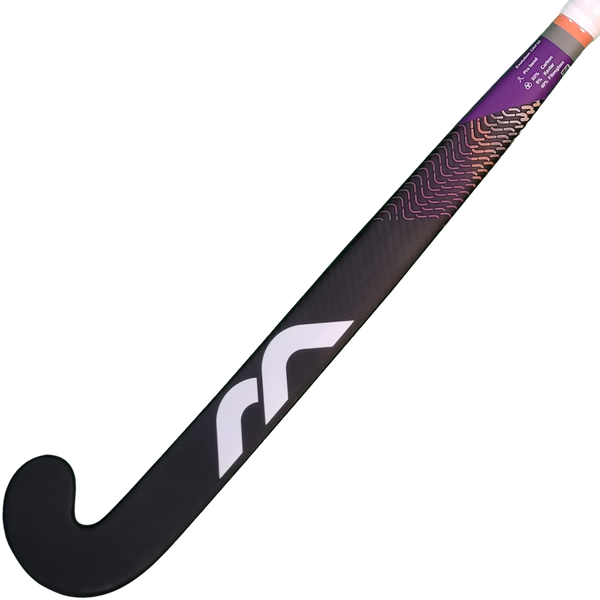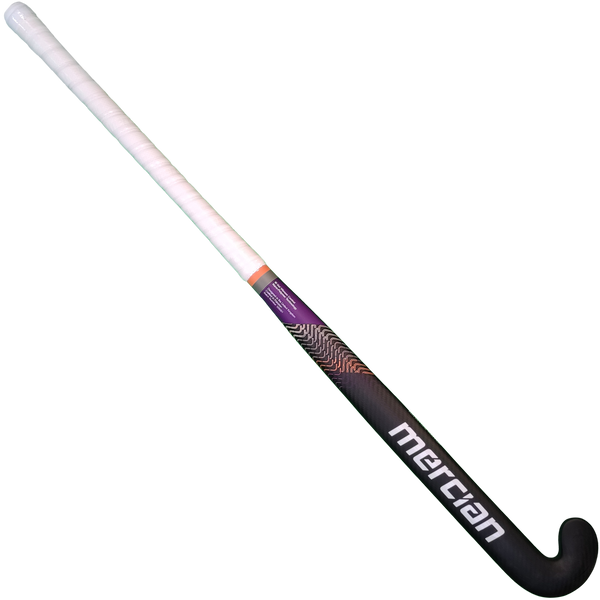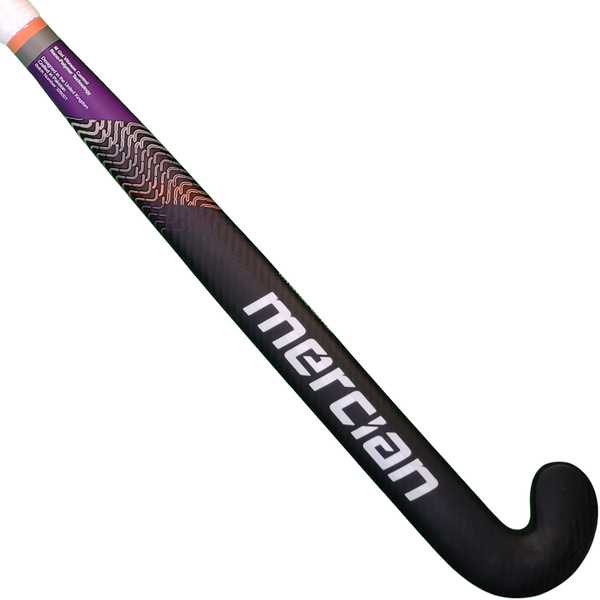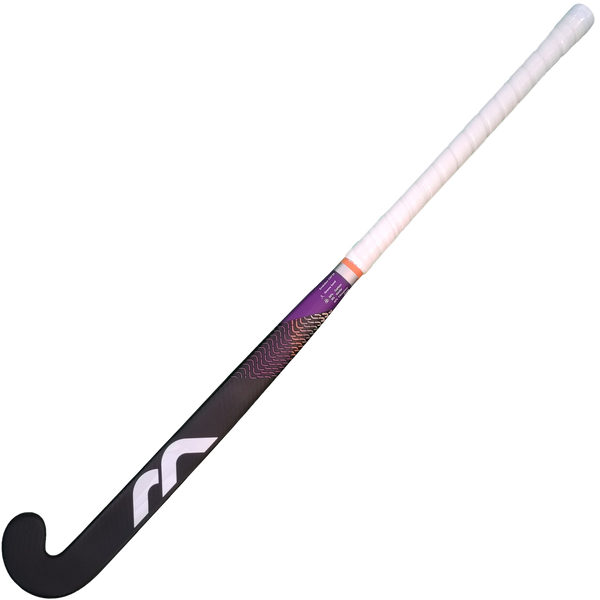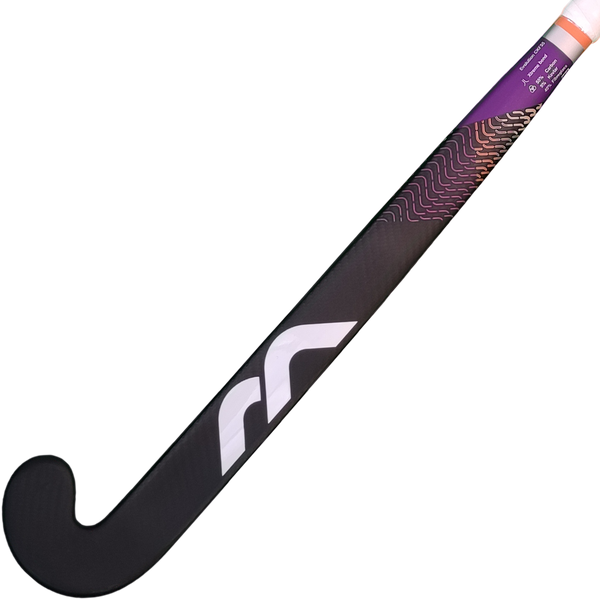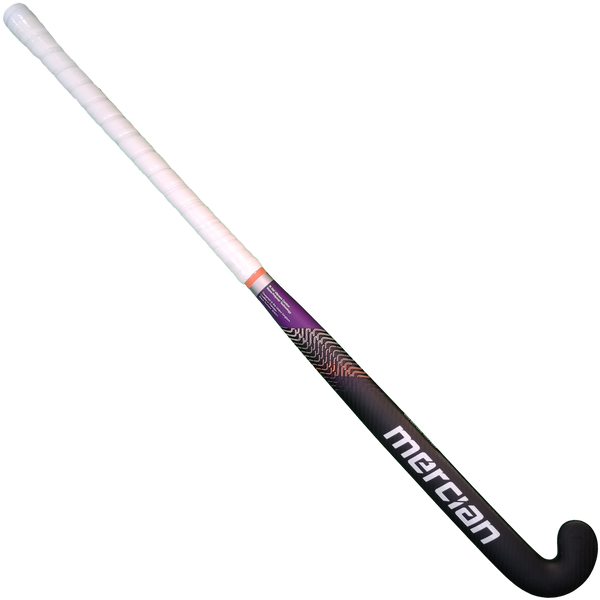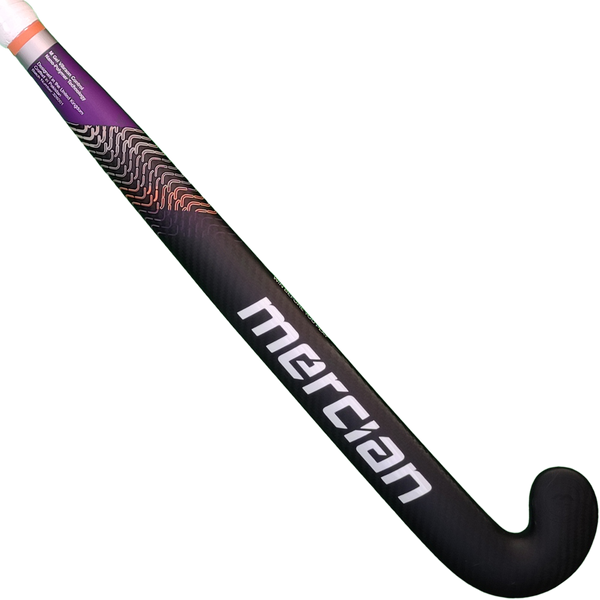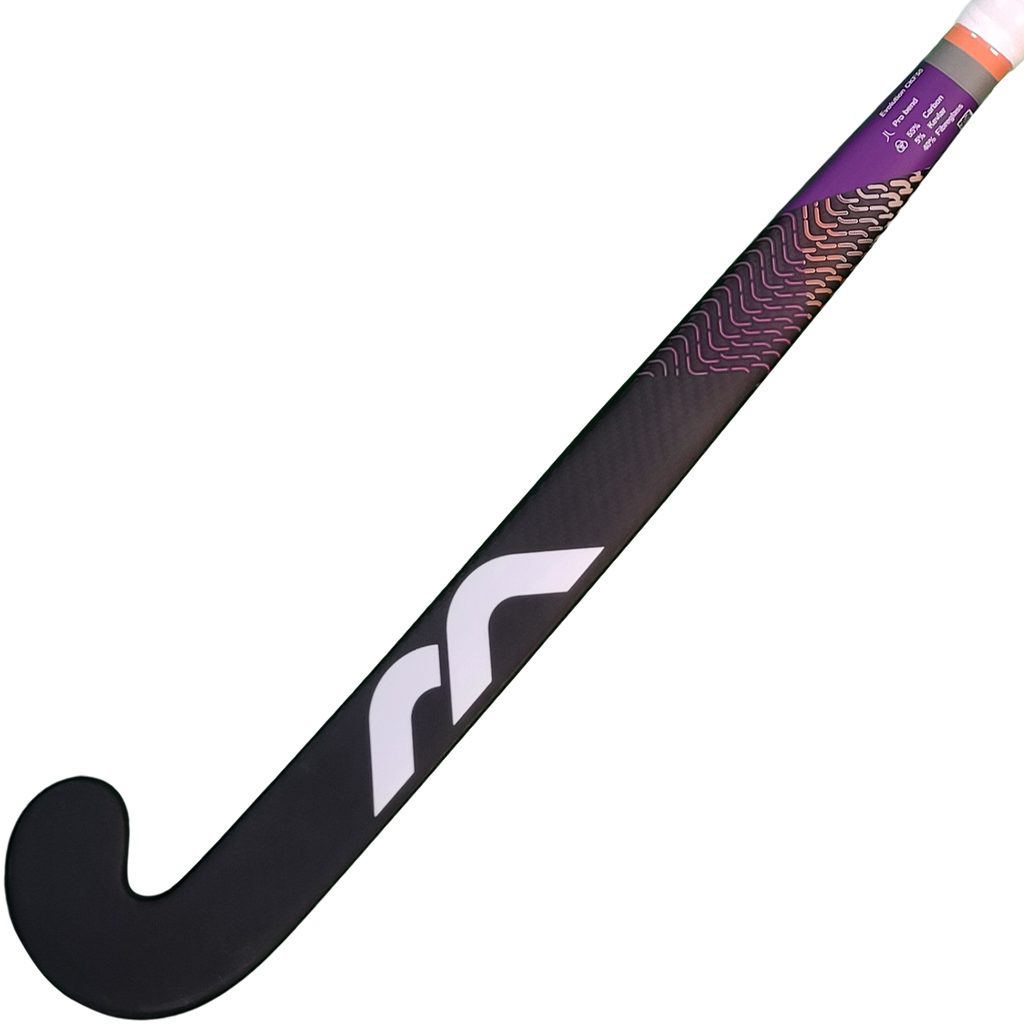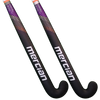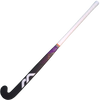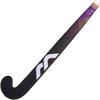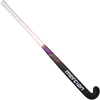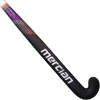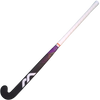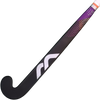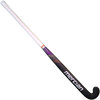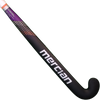Evolution CKF55 (2023)
- Description
- Technical Details
- Player Profile
The Evolution CKF55 is a 55% carbon model with the high-quality Toray carbon placed in multi-direction laminate sheets (creates strength in all directions) across a (30%) fibreglass skeleton and with integrated fibreglass laminates giving great touch and feel with the (15%) Kevlar increasing durability, stiffness and laminate bonding. This model is available in the less aggressive Pro (low) bend (24mm @ 230mm), suitable for multiple skill sets and abilities and the Xtreme bend for drag-flicking and 3D skills.
- 55% Carbon
- Pro (low) bend (24mm @ 230mm) / Xtreme Bend
- Dual-process vibration control (Piezo-Electric fibres, M-Gel)
- Nano-Polymer Resin
- High Friction Face
- Cold Touch Lacquer
Xtreme Bend – NEW 2022_2023
The Xtreme bend features a number of the popular concepts seen in our other bends in addition to some new elements.
The toe of the stick has been thinned down both on the face and the back of the head to aid getting the ball into the air for 3D skill execution. The backhand zone has been flattened to aid passing and shooting accuracy. The actual bend of the stick (face) is the same as the Ultimate – 24.5mm at a maximum bend point of 200mm from the head. A 2mm concave shaft, with the concave situated above the stick face, so enhancing flicking and ‘sling-shot’ slapping skills but without compromising the ball / face impact. 4-degree face twist to aid ball handling, dribbling and control on the reverse side. A thinned handle so that with the EVA under grip on the CKF90 the grip dimensions feel ‘normal’.
PRO BEND
The Mercian Pro Bend incorporates a near maximum 23.5mm bow positioned just below the mid-point of the shaft, approximately 250mm from the bottom of the stick. The shaft has then been shaped to give a thinner profile under the right hand and a balance point that favours the head end of the stick. This gives a combination of great stick turn-over due to the shape but enhanced hitting power because of the balance point and sweet spot, the hitting power is also enhanced because the head is 1.5mm thicker than the ultimate bend.
CARBON FIBRE – CKF55 – 55% Carbon
One of the most common questions asked by the consumer is ‘how much carbon?’ with the perception that more is better. That is far from the truth, so to shed a little light. Firstly, the quality of carbon (manufacturing point) is important. Toray (Japanese) Carbon is often considered the best, but Carbon from Germany, Scotland and South Africa (to name a few) are all high-quality. Sticks are usually made in Pakistan and most major brands will import Carbon into Pakistan to make sticks. Local made carbon is not usually as good. But it is difficult to know if a brand uses imported carbon. The number of filaments in the carbon fibre is relevant, 1K, 3K etc relate to the number of filaments of pure carbon within a fibre or ‘tow’. 1K is used in aeronautical industry and electronics. 3K and 6K are commonly used in sport as they have the right combination of weight and strength. Anything over 6K is very dense and too heavy for sports equipment. Again, this isn’t a common line of questioning from the consumer but may come up. Carbon fibres are a straight-line material and so provide stiffness in a single direction. To provide stiffness in multiple directions the fibre can be woven into a multi-directional sheet (seen as an obvious weave in the sticks surface) or single direction sheets can be layered over each other to create the multi-directional stiffness. 40% of the weight of a composite stick comes from the resin within it. So a stick can’t be 100% carbon. However, it can be claimed that 100% of the composite materials in a stick are carbon. Mercian do not believe this gives optimal strength and so always combine the carbon overlay with a composite micro-skeleton made from fibreglass, Kevlar (aramid) and basalt. Carbon is stiff but brittle. The stiffness means that the energy created by the player when striking the ball – hit / slap – transfers to the ball and is not absorbed by the stick. Maximum energy transfer allowed by the FIH is 98%. But this stiffness means that the stick will not absorb energy on trapping / receiving so needs soft hands! The brittleness of carbon means that if the fibres are broken (stick tackle / post impact) they will crack and the stick can or will fail. This is not a manufacturing fault. Other materials can be used in conjunction with carbon to get a positive performance outcome. Special chemicals are used with paints and lacquers to get them to bend to the top layer of carbon and create high-quality graphics.
COLD SATIN LACQUER
The final coating applied to a stick is usually purely for cosmetic reasons. The Cold Satin Lacquer applied to the Evolution models actually feels different under a player's touch, increasing awareness of temperature and giving the impression of reduced friction for dribbling and stick turn-over.
TCDK (tungsten carbide diffused Kevlar) – CKF55 – 15%
Kevlar is the registered trademark for a para-aramid synthetic fibre, also known simply as ARAMID in other sticks. This high-strength material was first commercially used in the early 1970s as a replacement for steel in racing tires. Typically it is spun into ropes or fabric sheets that can be used as such or as an ingredient in composite material components. Currently, Kevlar has many applications, including bulletproof vests, because of its high tensile strength-to-weight ratio; by this measure it is 5 times stronger than steel. Tungsten carbide (chemical formula WC) is a chemical compound (specifically, a carbide) containing equal parts of tungsten and carbon atoms. In its most basic form, tungsten carbide is a fine grey powder, Tungsten carbide is approximately twice as strong as steel, For TCDK the fine powder version of WC is diffused through a sheet of Kevlar in the manufacturing process further enhancing the natural characteristics of the material and increasing both its strength and more specifically its durability.
PEIZO-ELECTRIC FIBRES
Piezo-electric fibres are included in all the Evolution sticks they are used to ‘harvest’ the vibrations created in these super-stiff sticks and turn them into heat. The result of this is efficient vibration dampening. It's achieved because the molecules within the material are active, the force applied to them (vibrations) causes the fibres to bend and emit a small electric charge that is dispelled as heat. The technology originally used by Head in tennis, applied those forces through an electrode to counter-act the vibrations (this isn’t present in hockey sticks!)
NANO-POLYMER RESIN
The particles within our resins have been altered at a nano-size level (10 x below microscopic) Instead of using nano-carbon particles, the use of rubberized polymers creates a more flexible but stronger bond between the composite layers. This increases the stiffness of the sticks and reduces de-lamination.
FIBREGLASS – CKF55 – 30% FIBREGLASS
The basic synthetic material that makes the initial micro-skeleton in all Mercian composite sticks. Simple fibreglass stands, dipped in custom resins and then woven into sheets to be combined with other materials to create the combinations relative to the specific stick’s performance.
- The Evolution CKF55 is a good-quality, intermediate carbon percentage composite stick suitable for a wide variety of players.
- The 55% carbon gives a good level of energy transfer but also good ball control because of the softer feel associated with a lower carbon, higher fibreglass mix.
- The Pro Bend offers a 24mm bend at 230mm from the head, allowing 3D skills, overhead passes and drag flick execution, but without the aggression of the Ultimate bend, making it suitable for a wider range of player.
- Suitable for defenders who want to execute a wide range of skills - running with the ball, hitting and slapping because of the lower balance point, lifted ball skills. (Tackling is skill, not stick, dependant).
- Suitable for midfield players who like to carry the ball at speed through space, distribute using push, hit and slap passes and shoot when the opportunity allows, with extra control because of the angle of the face.
- Suitable for attacking players who want the feel offered with the lower carbon, but the head weighting of the Pro bend to aid hitting power for effective shots. The open face does help 3D skills, but retains the alignment between hands and stick face that can be compromised with an overly aggressive bend.










